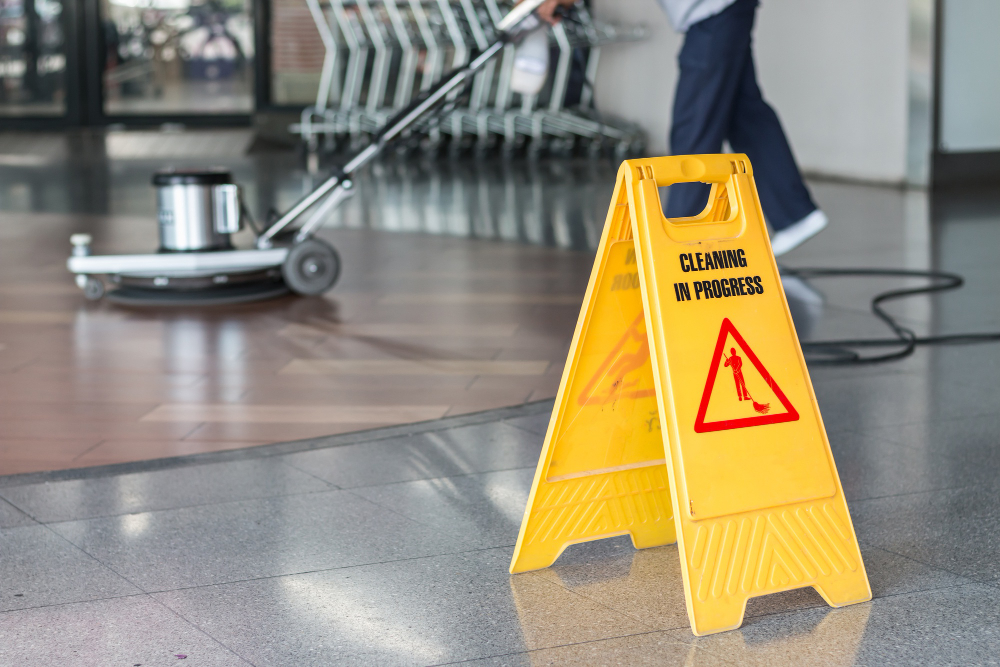Following long-awaited ‘Freedom Day’ on 19th July, the UK government is no longer instructing people to work from home where possible, so many workplaces will be dusting off the cobwebs and welcoming back employees.
For those who run these establishments (offices, labs, warehouses etc.) there’s much to consider and a lot of ground to cover.
Working arrangements will need to be put in place that have everyone’s best interests at heart. We’ve highlighted the official government advice on Cleaning the Workplace for you right here:
Before reopening
Objective: To make sure any site or location that has been closed or partially operated is clean, and ready to restart.
Before you restart work, you should :
- assess all sites, or parts of sites, that have been closed
- review cleaning procedures and provide hand sanitiser
Consider:
Checking if you need to service or adjust ventilation systems.
Most air conditioning systems do not need adjustment if they draw in a supply of fresh air. See the HSE guidance on ventilation and air conditioning for more information.
Positive pressure systems can operate as normal.
Restart and test specialist equipment which may have been unused for longer than usual.
Keeping the workplace clean
Objective: To keep the workplace clean and prevent the spread of COVID-19 from touching contaminated surfaces.
Consider:
Cleaning work areas and equipment between uses. Use your usual cleaning products.
Determining the required cleaning process for expensive equipment that cannot be washed down. Design protection around machines and equipment.
Frequently cleaning objects and surfaces that people touch regularly. This includes door handles and keyboards. Make sure there are adequate disposal arrangements for cleaning products.
Clearing workspaces and remove waste and belongings from the work area at the end of a shift.
If you’re cleaning after a known or suspected case of COVID-19, refer to the guidance on cleaning in non-healthcare settings.
Providing extra non recycling bins for workers and visitors to dispose of single use face coverings and PPE. You should refer to the guidance on how to dispose of personal or business waste, including face coverings and PPE.
Hygiene: Handwashing, sanitation & toilets
Objective: To help everyone keep good hygiene through the working day.
Consider:
Using signs and posters to make people aware:
– how to wash their hands well
– that they should wash their hands frequently
– that they should not touch their faces
– they should cough or sneeze into a tissue which is binned safely, or into their arms if a tissue is not availableProviding regular reminders and signage to maintain hygiene standards.
Providing hand sanitiser in multiple accessible locations, as well as washrooms. Consider the needs of people with disabilities.
Setting clear use and cleaning guidance for toilets. This is to ensure they’re kept clean.
Enhancing cleaning for busy areas.
Taking special care when cleaning portable toilets.
Providing more waste facilities, and more frequent rubbish collection.
Providing hand drying facilities. Provide paper towels, continuous roller towels, or electrical dryers.
Keeping the facilities well ventilated. For example, by ensuring any mechanical ventilation work effectively and opening windows and vents where possible.
Changing rooms & showers
Objective: To reduce the risk of COVID-19 spreading in customer changing rooms.
The enclosed nature of changing rooms may result in increased risk of COVID-19 spreading.
You should manage them carefully to reduce that risk. Businesses should update their risk assessments for each premises where changing rooms are being used.
You should ensure adequate ventilation in changing rooms. For example, by ensuring mechanical ventilation works effectively and opening windows and vents where possible. Read the HSE advice on air conditioning and ventilation.
Consider:
Setting clear use and cleaning guidance for showers, lockers and changing rooms. This is to ensure they’re kept clean and clear of personal items.
Enhancing cleaning of all facilities regularly during the day and at the end of the day. Use normal cleaning products. Pay attention to frequently hand touched surfaces, and consider using disposable cloths or paper roll to clean all hard surfaces.
Keeping the facilities well ventilated. For example, by ensuring any mechanical ventilation works effectively and opening windows and vents where possible.
Making hand sanitiser available on entry and exit.
Handling goods, merchandise and other materials, and onsite vehicles
Objective: To reduce the spread of COVID-19 through contact with objects coming into the workplace, and vehicles at the worksite.
Consider:
Putting in place cleaning procedures for goods and merchandise entering the site.
Putting in place cleaning procedures for the parts of shared equipment people touch after each use. Consider all equipment, tools and vehicles. For example, pallet trucks and forklift trucks.
Encouraging people to wash their hands more often. Put in place more handwashing facilities for workers who handle goods and merchandise. Provide hand sanitiser where this is not practical.
Regularly cleaning vehicles workers may take home.
Remember, you don’t have to take care of all the above yourself, there are companies like ours that offer an array of services that can ensure your workplace is a clean, safe and bright environment for everyone. You can get in touch on 0161 883 0328 or request a callback on our homepage.


Comments are closed.